
An updated bathtub can give a bathroom a whole new look. Find out how much it costs to replace a bathtub, including prices by type and labor costs.
Rub-a-dub-dub, let’s talk tubs


What’s better than coming home from a long day, slipping into a hot bath, and letting your stress melt away like soap bubbles? Whether you’re building a brand-new bathroom or simply replacing a worn-out tub, we’ve got the info you need to upgrade to a new tub that fits your and your family’s needs. There are several types of bathtubs to choose from; some are perfect for relaxing after a long day, while others are more utilitarian for bathing kids and pets. Read on and soak in all in—this handy guide shares everything you need about bathtubs.
Think beyond the tape measure: Your bathtub is more than its footprint. It’s about making your home fit your lifestyle without tearing down walls (unless you want to!). Aside from style, consider your family’s specific needs and overall aesthetic before you wade into your bathtub upgrade. Consider the following factors:
Space: Do you have enough room for a separate bath and shower, or will you need to tear down walls? Is an alcove bath-shower combo the only space-saving solution, or would a corner tub work? The standard bathtub size is 60 inches long and 30 inches wide, but that’s just a starting point; many shapes and sizes are available. Take measurements and talk to your pro to see what’s possible.
Use: Will you splash with toddlers, soak away stress, or scrub Fido? Knowing how you’ll most use your tub will help you choose the right one. A walk-in tub will make the bathroom more accessible for older adults. If this bathroom is just for you, it might be time to splurge on a luxurious soaking tub. If you’ll be up to your elbows keeping kids and pets clean, pick a tub that works for that purpose.
Special features: Features like jets need room for pumps and timers.
Water heater capacity: Your water heater must heat enough water to fill the tub, usually between 25 and 150 gallons.
Floor strength: Some bathtub materials, like cast iron, weigh a lot—make sure your floor can support the heft.
Cost: Don’t drain your wallet. The cost of a new bathtub ranges widely based on style, size, material, and plumbing changes.
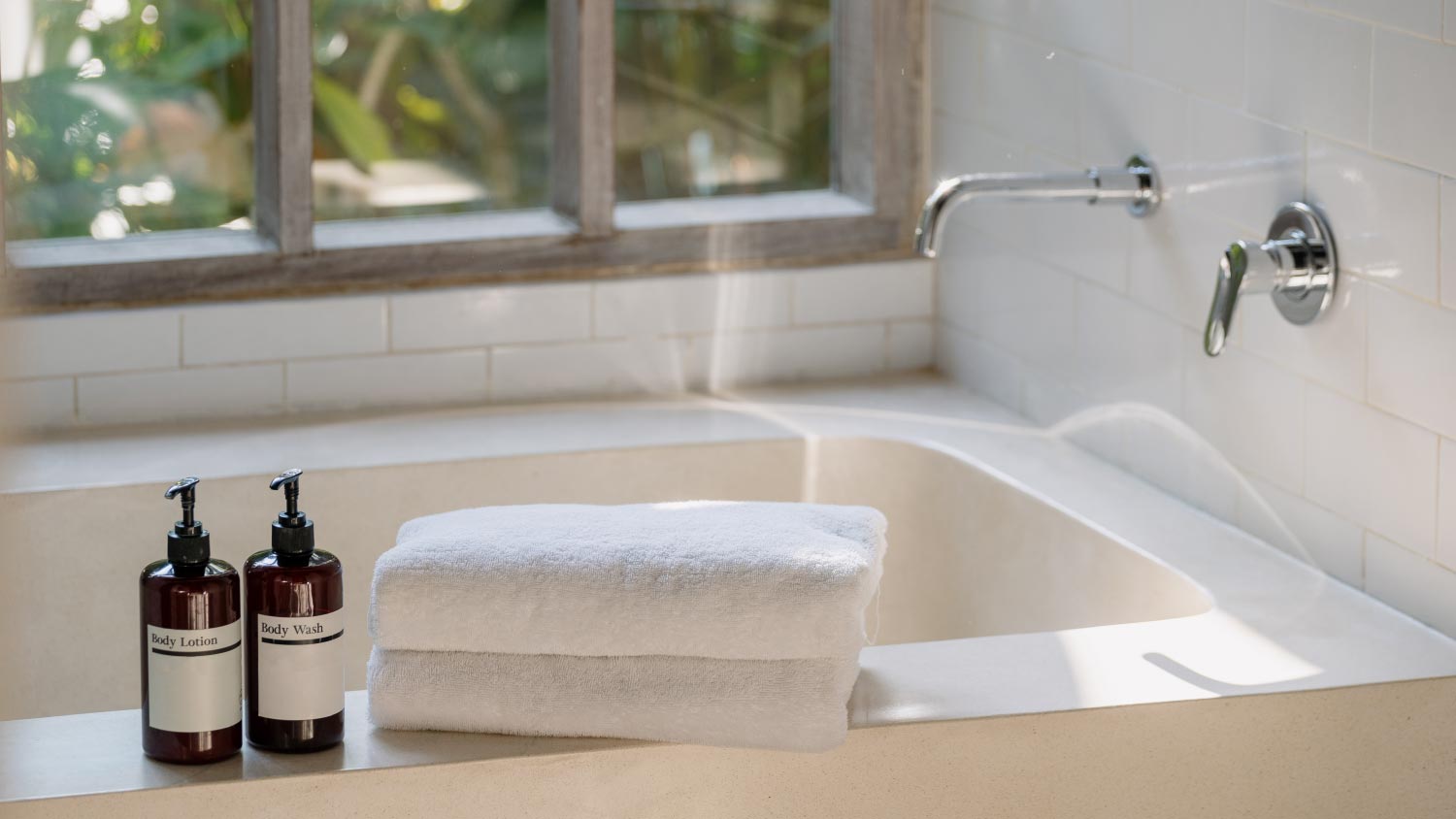
The alcove bathtub is a modern classic—one you likely grew up with, as it’s a popular type of tub. It’s the MVP of family bathrooms: a classic multitasker where kids can play with toy boats, and adults can get in a quick soak or hot shower. This style features a bathtub surrounded by three walls, which generally includes a showerhead for a versatile tub-shower combo. An alcove bathtub is an excellent space saver and an affordable choice, with basic models starting at $200.
| Pros | Cons |
|---|---|
| Saves space | Requires tile or wall surround |
| Can customize wall surround to match | Less design flexibility, particularly in placement |
| Affordable | Few sizing options |
Best for: Small bathrooms or those on a budget

Freestanding bathtubs, typically made from fiberglass and acrylic tub materials, are the showstoppers of the bathroom world, where vintage charm meets modern luxury—and their classic good looks and bold design statement often make them a bathroom centerpiece. Freestanding tubs don’t connect to any walls; the only connection point is the plumbing through the floor, so the location depends on where the plumbing runs.
Installing a freestanding bathtub rather than a built-in tub requires significant space around it, which is not ideal for small washrooms. A freestanding tub costs an average of $2,500.
| Pros | Cons |
|---|---|
| Timelessly stylish and elegant | Expensive |
| Adds a centerpiece to the bathroom | Takes up a lot of space |
| Fits many décor styles | Often requires plumbing to be rerouted |
Best for: Homeowners with spacious bathrooms who want a stylish accent piece
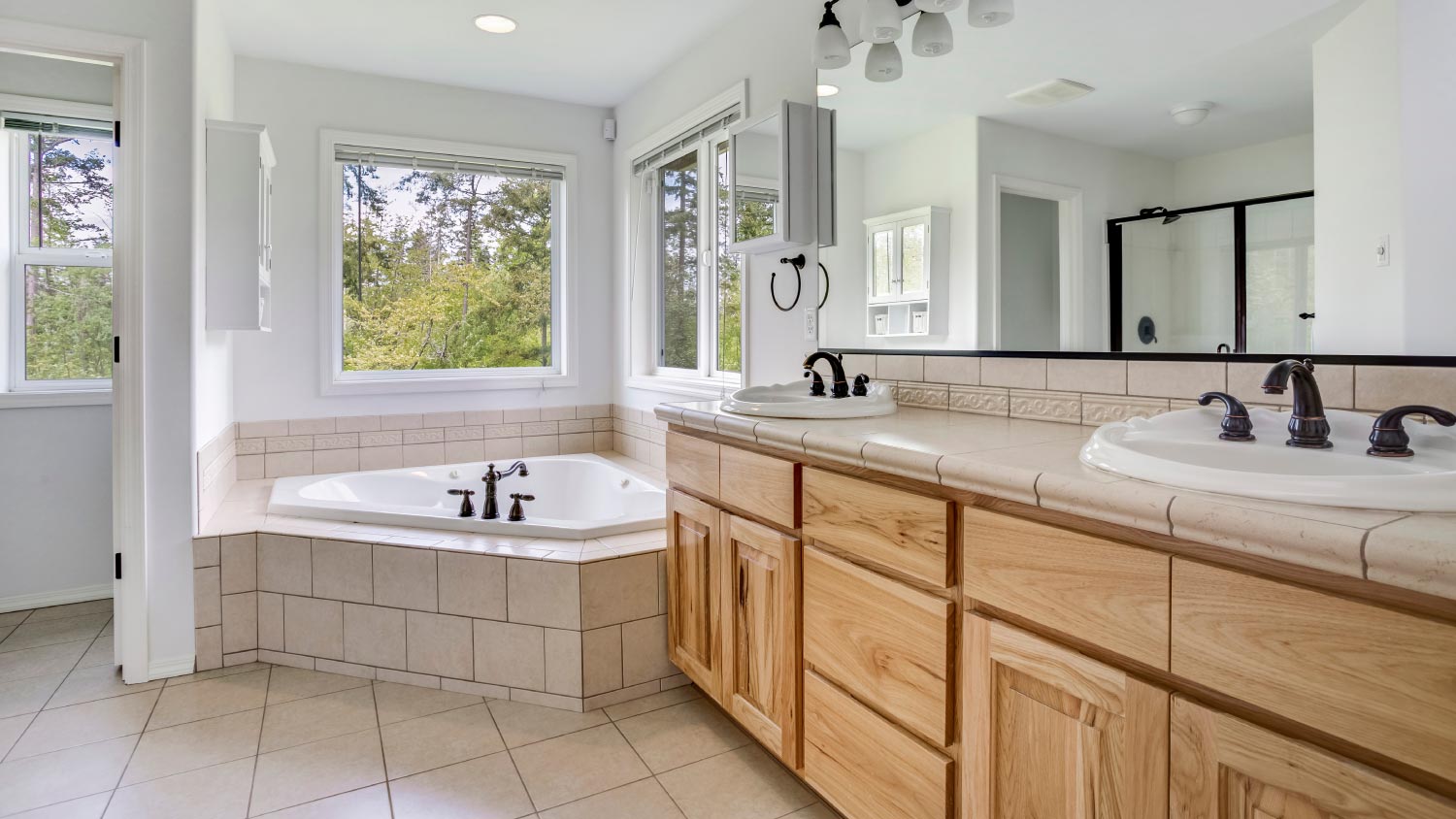
Corner tubs do more than save space—they turn underused nooks into private retreats. They are, of course, installed in corners and supported by two walls or a custom deck. Running between $1,000 to $5,000, these models can be space-saving solutions when renovating and don’t have enough wall space for a traditional alcove tub. Typically, corner tubs range from 55 to 65 inches wide, but they’re a more customizable option.
Remember, they can be challenging to clean, as you’ll need to scrub deep into the tub’s corners. But all that work can pay off and earn you bonus points for a romantic setup with candles and bubbles.
| Pros | Cons |
|---|---|
| Space saving compared to freestanding tubs | Difficult to clean |
| Large and luxurious | Larger tubs require more water to fill |
| Attractive with many design styles | Expensive |
Best for: Creating a luxurious space with a smaller footprint
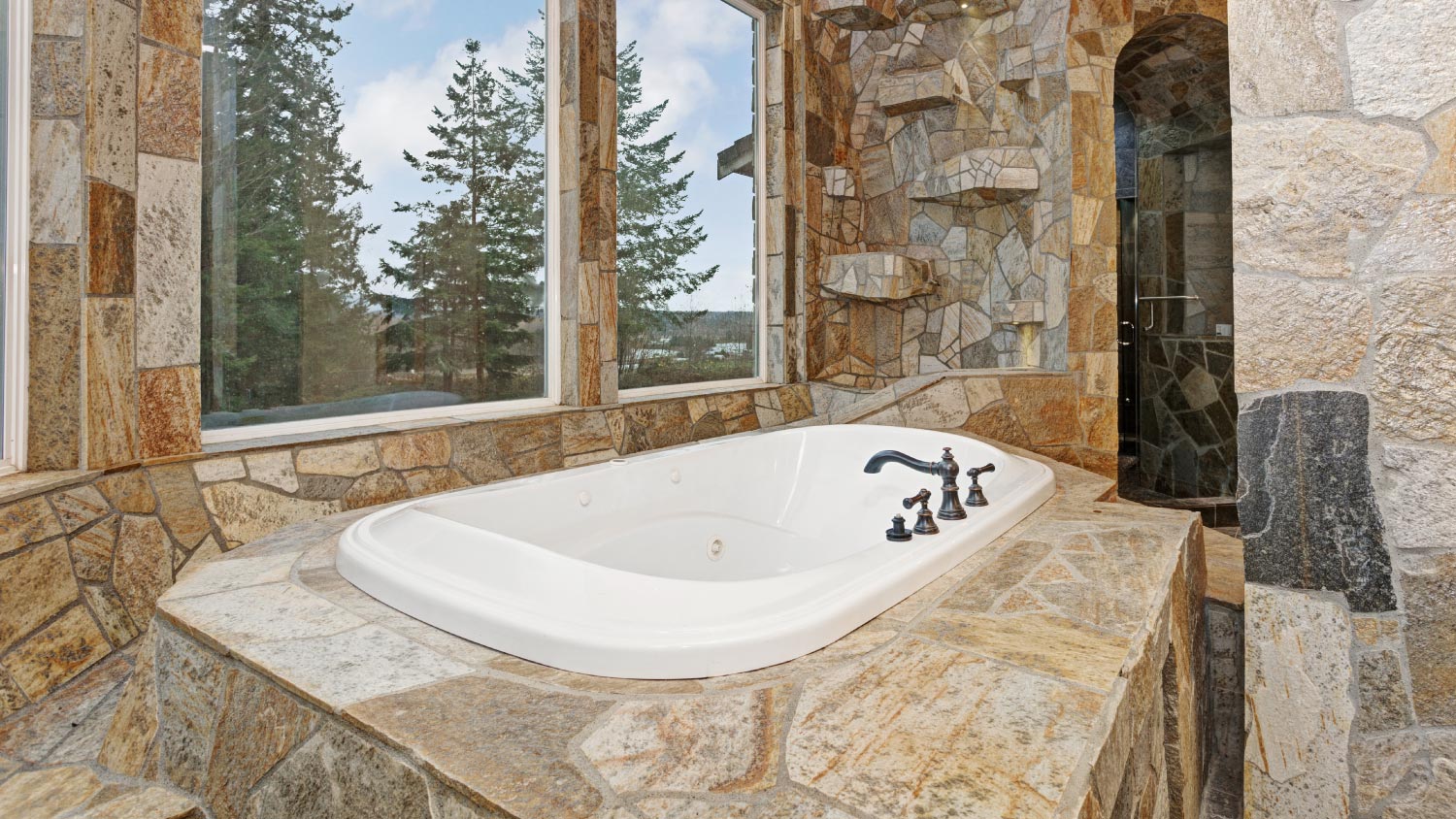
A drop-in tub is a highly customizable shell that fits into a raised platform deck you and your local bathroom remodeler design. The deck covers the plumbing and sides of the tub and can be deep enough to house bath products, books, candles, or a nightcap. The finished product is a seamless wall-to-tub transition that can match the rest of your bathroom’s look. The cost of a drop-in tub depends on the deck design's complexity and the materials' quality.
| Pros | Cons |
|---|---|
| Fully customizable size and design | Higher purchase and installation cost |
| Decks provide storage space | Requires a specialized professional to design and install |
| Can be built to fit perfectly in any space | Optional jets require more complicated plumbing and an access panel, which may be unattractive |
Best for: Homeowners who want complete control over their bathroom’s design
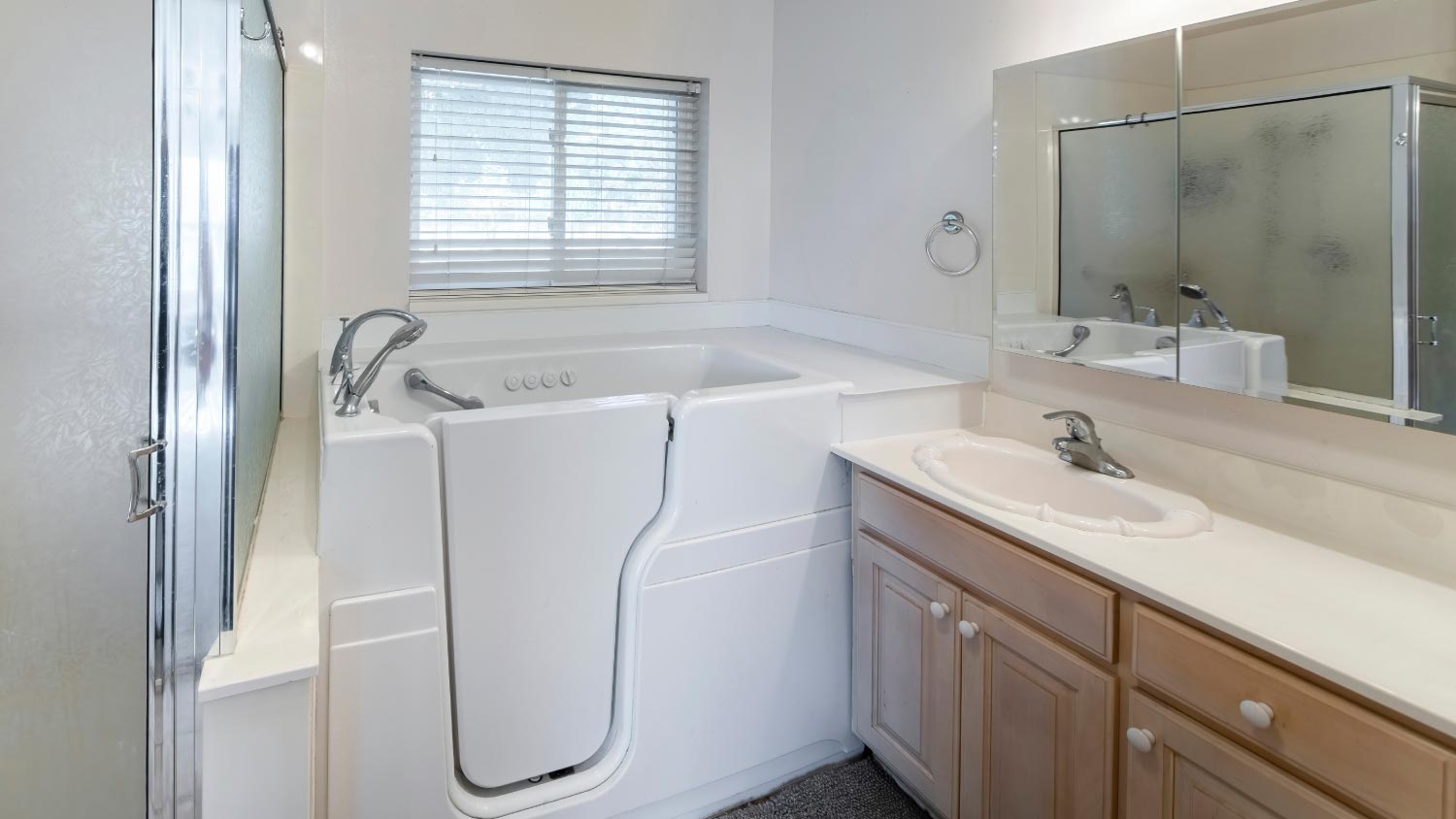
Walk-in bathtubs cost $4,000 to $12,000 on average. These tubs combine safety with the soothing power of water jets, and they’re perfect for older adults or those with mobility issues, as they feature a door for walking into the tub instead of stepping over the tub wall. They also come as shower-bathtub combos, and you can install safety and accessibility features, such as grab bars and hand-held showerheads.
The sides of walk-in tubs tend to be higher than other models to allow maximum immersion, but they can still fit into small spaces. For example, smaller models are only 4 feet long. Because you walk out the same way you walked in, you’ll need to wait for the water to drain before exiting the tub. If you want a walk-in tub, hire a local bathtub installer with experience in this unique tub style.
| Pros | Cons |
|---|---|
| Accessible design for those with mobility issues | Expensive and not usually covered by Medicare |
| Unique add-ons like hydro massagers, heated seats, or aromatherapy | Users must enter and exit tub when empty |
| Full soaking experience in smaller spaces | Difficult to install |
Best for: Homeowners with accessibility needs

A jetted bathtub will take your relaxation game to the next level. Available in many different sizes and styles, jetted bathtubs can be fitted with whirlpool jets, compressed air bubbles, or a combination. Be prepared to clean your jetted tub regularly to prevent clogs, flush the pumps with special cleaners, and scrub the jets. Expect to spend $1,000 to $4,000 for a jetted bathtub.
Consider an air bathtub for a similar but less intense bubbling bathroom experience.
| Pros | Cons |
|---|---|
| Relaxing, spa-like experience | Requires frequent cleaning to prevent clogs |
| Increased home value | Expensive and difficult to install |
| Helpful for treating sore muscles and arthritis | Takes up a lot of space |
Best for: Bringing the spa experience into your own home
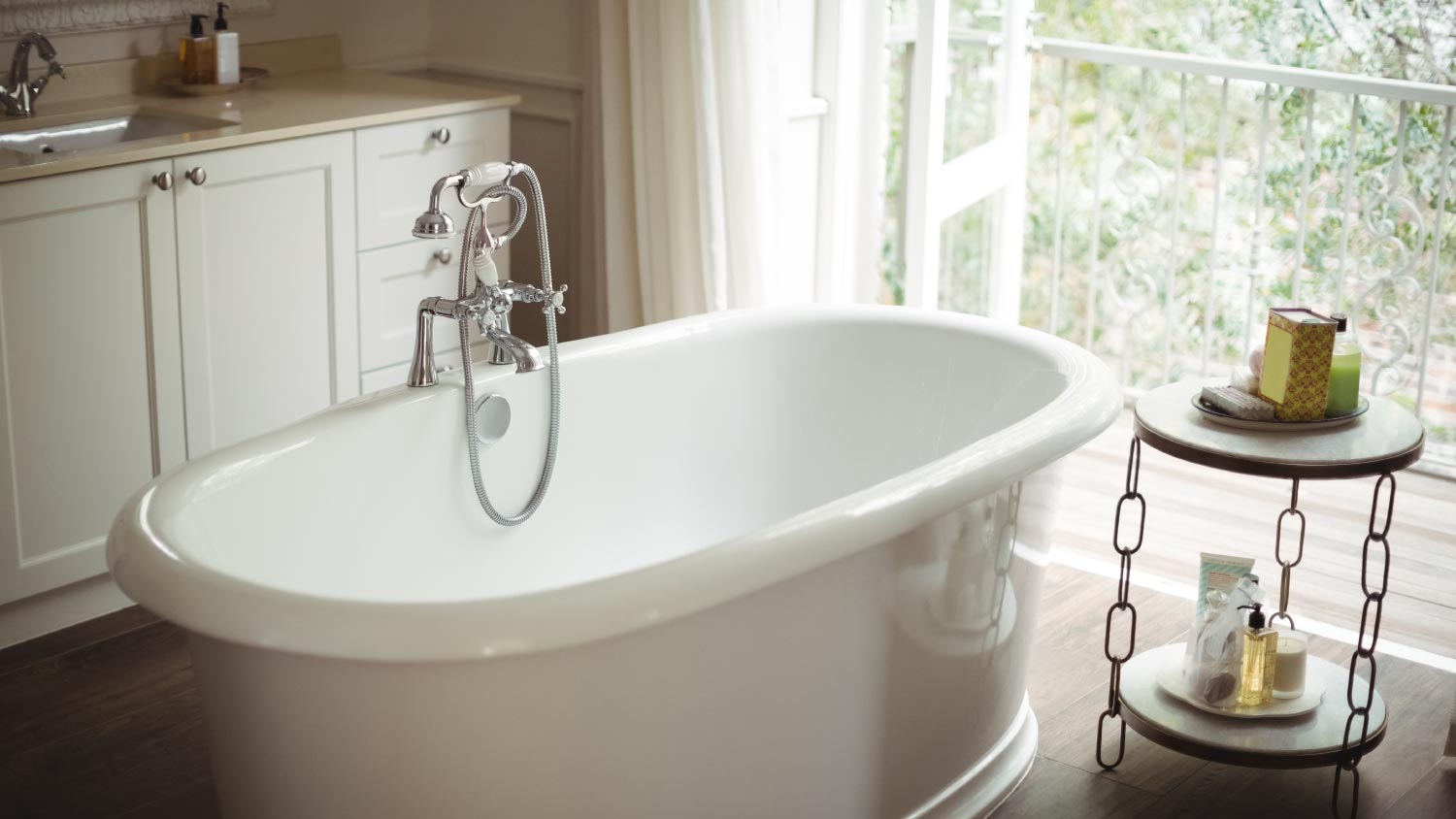
Soaking tubs, known in Japan as ofuro, are much deeper than standard tubs and have a built-in seat for comfort during lengthy, luxurious baths. These striking designs were historically made with wood, though modern versions are made of copper, acrylic, fiberglass, and steel. While soaking tubs can be installed as inset designs, most prefer to install them as freestanding centerpieces.
A pricier option, ofuro cost anywhere from $5,000 to $10,000. Because they are much deeper than other tubs, confirm that your water heater can heat enough hot water to fill the tub. Otherwise, you won’t be able to enjoy the ofuro’s benefits or will need to replace your water heater, which can be very costly.
| Pros | Cons |
|---|---|
| Relaxing bathing experiences | Faucets installed separately |
| Eye-catching design element | Use a lot of water and could even require a new hot water heater |
| Luxury features like heaters and ergonomic contouring | Can be difficult to get out of |
Best for: Homeowners who want a luxurious bath experience at home and do not have accessibility needs

If you want a new bathtub that goes with the flow, consider a combo tub with a shower head fitted over it. These are popular in homes with limited space, few bathrooms, young children, and pets because they offer the option of bathing or showering.
Shower and tub combos are basic and inexpensive, starting at $700, though more upscale models can cost up to $6,000. They are available in various colors, designs, and materials to suit any bathroom style; however, like an alcove tub, they usually have three walls surrounding them.
| Pros | Cons |
|---|---|
| Multifunctional | Some styles can be difficult to clean |
| Perfect for homes with pets or young kids | Can be difficult for those with mobility issues |
| Small footprint | Usually requires three walls |
Best for: Homes with only a few bathrooms or limited space in the bathroom
Don’t get soaked—learn about bathtub materials before you buy. The right option for your home will depend on how often you use the tub, your bathroom style, your budget, and the floor’s structural integrity. Like the different tub styles, each bathtub material has pros and cons.
Fiberglass is a thin, flexible material that can be molded into many shapes. It is one of the most affordable tub materials. While fiberglass tubs are easy to clean, they are prone to scratching, cracking, and discoloration.
Acrylic tubs are scratch-resistant and studier than fiberglass. They are also lightweight, making them easy to install. Acrylic tubs come in many colors, sizes, and shapes. They provide a good balance of durability and affordability but are susceptible to warping.
Though iron is prone to rusting, cast iron tubs have a protective layer of enamel that protects them from rust, scratches, chips, and other damage. Cast iron tubs are very durable and retain heat well, but they are expensive and so heavy they may require additional floor support if not installed on the ground floor.
Cast polymer is scratch- and stain-resistant for both cultured stone and solid surface tubs. The durable material is easy to clean and available in many colors, sizes, and shapes, but it is pricey and can crack over time.
Copper tubs are timeless and striking and only get better with age. They also retain heat well; their non-porous surface and naturally antimicrobial properties mean cleaning is a breeze. After years of water exposure, each tub will develop its own one-of-a-kind patina. Unfortunately, these tubs are expensive, heavy, and difficult to find. Plus, they may clash with some design styles.
Want to bathe in a sculpted masterpiece? Consider investing in a stone bathtub. Stone tubs are very heavy and are best for bathrooms on the ground floor. If you have a strong enough floor, these bathtubs are durable and guaranteed to serve as an eye-catching statement piece in your bathroom. But get ready for a bit more commitment than other tubs; they are expensive, can be challenging to clean (many require specialty cleaning chemicals), and may absorb heat from your water—leaving your bath to cool down quickly.
To ensure a seamless fit, you must be precise when measuring your space for a new bathtub. Here’s a step-by-step guide to help you measure your space.
Most bathtubs have standard dimensions; if the style you’re considering doesn’t fit your space, you must order a custom bathtub or choose a different type.
| Type of Tub | Standard Length (inches) | Standard Width (inches) | Standard Height (inches) |
|---|---|---|---|
| Alcove | 60 | 30–32 | 14–16 |
| Freestanding | 55–72 | 27–32 | Up to 20 |
| Corner | 60 | 60 | 20–22 |
| Drop-In | 60–72 | 30–36 | 14–20 |
| Walk-In | 48–60 | 28–36 | 38–48 |
| Jetted | 60–72 | 30–36 | 18–24 |
| Soaking | 36–48 | 32–36 | 27–34 |
| Shower-Tub Combo | 60 | 30–32 | 14–20 |
Start by measuring the length, width, and height of the area where you’ll place your new bathtub. For alcove tubs, the three walls around the enclosure area must match the tub’s dimensions.
Then, measure the existing plumbing locations and note the distance from the floor to the drainpipe and faucet connections—this will help you determine the bathtub rough-in dimensions. The new tub’s drain and water connections must align with these points, or you’ll need to call a plumber near you to move the plumbing connections.
Finally, pay attention to the floor’s slope and weight capacity. This is especially important if you install a larger tub, such as a soaking or whirlpool bathtub. These are very heavy when filled with water and a person, so make sure your floor can handle the weight. If not, installing additional flooring joists is a smart move.
Before taking the plunge, confirm that the tub’s orientation matches your bathroom layout. For example, alcove tubs often come in left-hand and right-hand configurations, which refer to the side the drain is on when you face the tub. For freestanding tubs, measure the distance from your water supply pipes to where the tub will sit to ensure the connections will reach.
From average costs to expert advice, get all the answers you need to get your job done.

An updated bathtub can give a bathroom a whole new look. Find out how much it costs to replace a bathtub, including prices by type and labor costs.

Finishing an attic can make a great addition to your home. This guide breaks down the cost to finish an attic, including labor, materials, and more.

Tiling a shower is an investment in the look and function of your home. This guide explains the factors behind the cost to tile a shower.
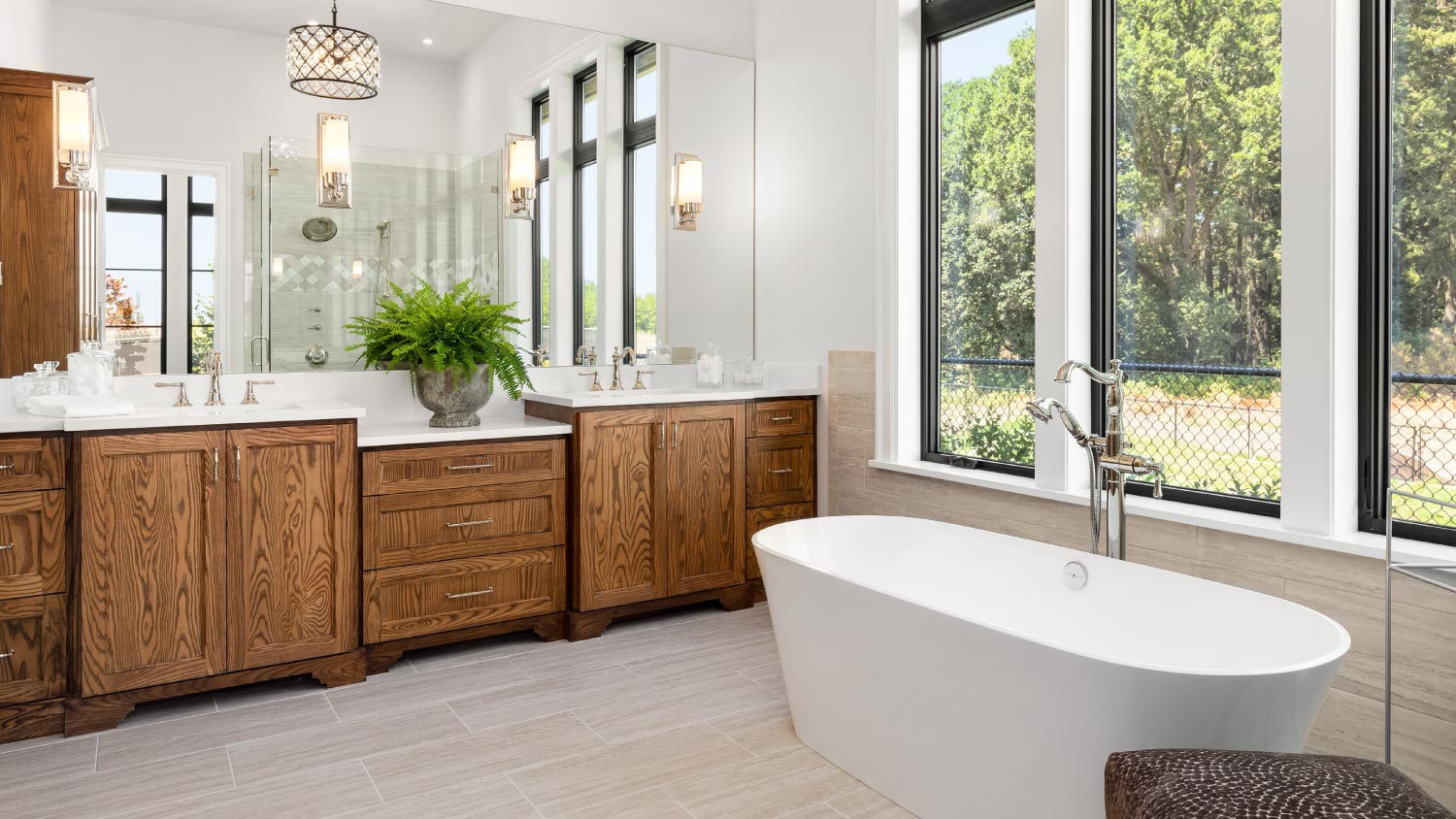
An updated bathtub can give a bathroom a whole new look. Find out how much it costs to replace a bathtub in Tampa, FL, including prices by type and labor costs.

Understanding the types of kitchen remodel work that require a permit and how to apply for one will help you avoid any complications or fines further down the line. Read this guide to understand all the important steps.

DIY sink installation is a doozy but do-able for those with experience. Use this guide to learn how to install a bathroom sink in a few steps.